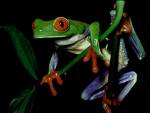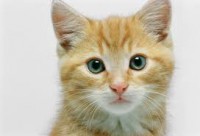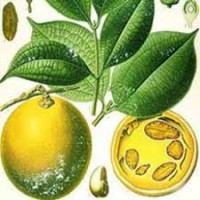Once upon a time a milkmaid in England demonstrated that the harmless cowpox sore she contracted from an infected cows udder protected her from contracting the devastating scourge of smallpox.

So began the story of vaccination as we know it today.
Given that the original concept of vaccination or inoculation/immunisation, arose from the homeopathic principle that ‘like cures like’, it is ironic that some of the staunchest advocates for vaccine development and use in modern times are often those most opposed to the practice of homeopathy. C’est la vie.
Unfortunately both vaccination and homeopathy continue to be subjects that raise heated discussion or argument in many circles on a chronically recurring basis, both in the academic and public arena. Vaccination is far from a black and white issue despite often being portrayed as such for the sake of a good argument.
In fact, I would suggest that ever since the practice of vaccination was introduced widely to society over two hundred years ago, there have been concerns about the safety and the necessity of the practice of introducing disease to prevent disease. We also need to consider that the majority of recipients of vaccines do not volunteer to have them.
Those opposed to the practice of vaccination are not necessarily against it outright but recognise the need for transparency and accountability in vaccination programs. Recipients of vaccines have a right to access accurate information regarding the principles underpinning vaccination and those administering vaccines have a responsibility to acquire and disseminate accurate or complete information.
Whenever vaccination is mentioned these days, many defences may be raised in anticipation of challenge, confusion and conflict. This may partly arise from a lack of transparency in the industries that promote and sell vaccines as much as the frustration arising from the ignorance in the regulatory sectors that blindly embrace and enforce the practice. In the human world, more often that not, it arises simply from fear, ignorance and ego. Vaccination has, since its inception, been held to be the gold standard of disease prevention and this culture warrants scrutiny in a world that has outgrown blind faith in its medical system.
The vaccination debate is the hung parliament of healthcare, the dynamo on the wheel of life that keeps the eternal lantern of conflict alight; the reason we all keep pedalling for democracy. We need to know, and have a right to know, the truth about who really wants to implement vaccination programs and for what real purpose.
Whilst this posting may have been prompted by the current situation in NSW concerning the eligibility of children to attend schools or receive funding, if their parents choose to not vaccinate them, it is not the subject of this posting.
My business is to advise on animal health and provide information to those seeking answers to pet related health issues even if the issues are, in essence, identical.
I am not an immunologist nor am I an expert in medical research and cell biology. My interest in the immune system however, predates my decision to be a homeopath and can be traced back to veterinary school when our lectures in immunology were amongst the most wondrous I recall.
The immune system is the hero of life, the warrior and guardian of the organism. It is also the most innately intelligent force a living organism has in its service; sleepless, vigilant and alert to any threat. My job as a veterinarian is to preserve the immune system function of animals, as it is a far better ally than any other you can have as a health provider. I am an immune system advocate and the tools in my veterinary practice are for supporting this system to perform optimally.
What does this mean?
Essentially and simply it amounts to good and appropriate nutrition, a safe environment and reduced stress. These are by far the most important life saving measures we can take or provide. We may also choose to employ vaccination. As a well recognised and reliable foundation for many preventative disease situations in animal populations, vaccination can be quite effective.
Vaccination tricks the immune system into believing it is being attacked.
Most holistic vets advocate at least one vaccination against core diseases once an animal is old enough for the immune system to respond appropriately. In dogs and cats this is ideally after 4 months of age but we can get results in dogs at 10-12 weeks of age and this is often necessary for practical reasons. More vaccine does not equate to more protection if the first vaccine has been effective in stimulating a response. Any positive level of antibody titre or measurement arising from natural infection or vaccination in an adult animal is deemed protective. A vaccine is highly unlikely to be protective however, if administered to cats and dogs under 8 weeks of age as maternally derived antibodies prevent the vaccine from working properly in the same way these antibodies prevent natural disease. Arguably vaccinating young animals actually weakens their immunity by diminishing the reserve of these passively acquired antibodies. As a result, we ought to be advocating change or investigation into this established practice of early vaccination in pups and kittens.
 Similarly, repeated vaccination repeatedly deceives the immune system into behaving as though it is under attack. Moreover this attack usually bypasses the natural route of infection of these diseases. A notable exception is the intranasal kennel cough vaccine in dogs, which more closely mimics natural exposure
Similarly, repeated vaccination repeatedly deceives the immune system into behaving as though it is under attack. Moreover this attack usually bypasses the natural route of infection of these diseases. A notable exception is the intranasal kennel cough vaccine in dogs, which more closely mimics natural exposure
Nevertheless, is there a point of immune exhaustion? Do we create immune confusion by being repeatedly ‘tricking’ with vaccine?
Why in the face of real and serious threat like cancer or AIDS, does the immune system not always trust the authenticity of such challenges? Cancer is not usually considered to be virally or bacterially induced but the immune system responds to all threats or breaches in a similar way. It is a multifaceted, versatile and adaptable system that has a life long memory recall to threats it has previously encountered unless these prove to be the wolves in sheep’s clothing. This is also one reason why some viruses keep mutating because they recognise the capacity of a fully competent immune system to protect an organism and have developed their own way of successfully tricking it by changing their ‘clothes’. It is also likely that cancer has a few disguises that hide it and protect it from the immune system.
We further exploit the intelligence of the immune system by producing vaccines to non fatal diseases like canine cough and those of non viral aetiology. We have come to trust vaccines so much that the answer to any new threat is to make a vaccine. It is not surprising therefore that, amongst others, we now have a malignant melanoma vaccine for dogs and a tapeworm vaccine for sheep.
So now the question has to be, does vaccination ultimately strengthen or weaken the immune system, or do neither? It takes a lot of energy to produce antibodies and there are consequences of mounting an immune response whether the disease is real or not. These consequences could be considered adverse vaccination reactions if we looked closely enough.
For a vaccine to be effective there needs to be a reaction so it becomes a matter of definition as to what constitutes an adverse reaction. Does this need to be life threatening to be considered adverse or to warrant recording/reporting?
Commonly acknowledged reactions are fever, skin eruption, increased discharges. Less common reactions include blood dyscrasia, autoimmune anaemia, inflammation, thyroiditis(hypothyroidism), seizure behaviour, behaviour change. What may an owner consider as adverse? Would an ensuing chronic sterile vaginitis or chronic otitis externa be recognised as an adverse vaccination reaction by most veterinarians and would any veterinarian consider that these may occur months after vaccination? Has the animals immune system been overly challenged and may it therefore be confused or exhausted?
Vaccination programs have arguably played an integral role in curbing disease outbreaks of highly contagious viral diseases in virgin populations. A judicious vaccination program was considered paramount in the eradication of Equine Influenza in Australia in 2007 by limiting the reservoir of natural infection in ‘at risk’ host populations. The containment of disease through restrictions on the movement of horses at risk was also an essential factor in the success of eradicating this non fatal but highly commercially devastating disease. Herd immunity needs to approach or exceed 75% before a population is ‘protected’ from epidemic disease. This is the essential reason for veterinarians insisting that all animals be vaccinated. The current (2015) recommendation (WSAVA, small animals) is that every animal be vaccinated (cats and dogs) and that each individual animal be vaccinated less often. Titre testing is the preferred measure of protection and repeated unnecessary vaccination is fortunately diminishing.
Titre testing is a proven, evidence based means of assessing the immune status of vaccinated animals and prevents unnecessary re-vaccination.
Once a new disease surfaces as did the fatal parvovirus in dogs in Australia in the late 70’s, and Hendra virus in horses recently, a vaccine program is devised. Dogs having been already exposed to the parvovirus either died or recovered and those recovered held immunity. This immunity whether naturally or artificially acquired can be passed on to the next generation for a short duration in puppyhood. Our Australian canines had a significant lead upon the vaccine manufacturers as they valiantly stood at the front line of parvovirus and went down in droves. Those surviving became the stalwarts of herd immunity until the vaccine arrived on the market many months later to swoop in to claim the victory already underway. Statistics and history in these events repeatedly demonstrate a decline in population infection and morbidity rates already mounted by immunologically stronger individuals prior to the arrival of reinforcements in glass vials.

It is impossible and impractical to prime the immune system with every disease threat so we choose a few to vaccinate against, based upon the environmental need. Unfortunately once a new one is added to the list it is usually added to the batch and we tend to end up overusing multivalent vaccines with the injection of up to five or six diseases per animal per procedure. Is it likely in nature that an animal would be exposed to six fatal or compromising diseases simultaneously?
There is a need for monovalent vaccine manufacture so that veterinarians can select specific single diseases to vaccinate against. The fewer viral components per vaccine the better. The difficult questions still prevail around the need for repeated and blanket vaccination protocols. Is there a risk that repeated false warnings in the form of vaccination cause unnecessary stress and chronic fatigue to a highly sensitive and intelligent system or individual? Could chronic disease actually be an immune mediated confusion or overload?
What is the most common preface or adjective to describe most medical diagnoses in modern times? Would it happen to be immune mediated……..something or other?
Would the treatment happen to require immunosuppressive medications or has the immune system already given up the good fight and resigned in total exhaustion?
Does vaccinosis exist?
Are many chronic diseases actually iatrogenic?
Who really knows? More importantly, all of us should probably endeavour to find out.
Discovery often involves thinking or looking outside of the box or challenging and re-evaluating conventional practices so that better ones can be adopted.














































